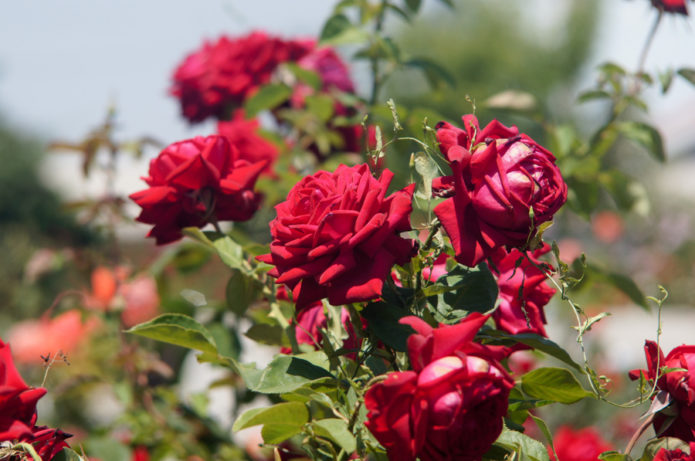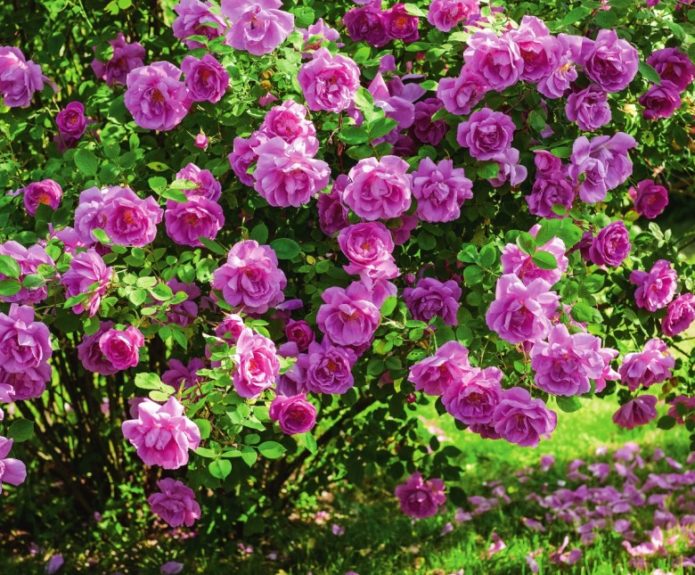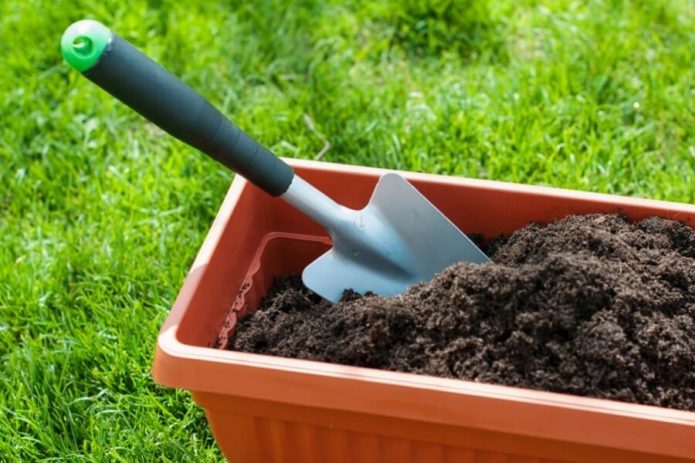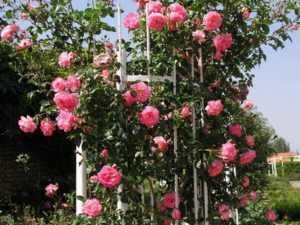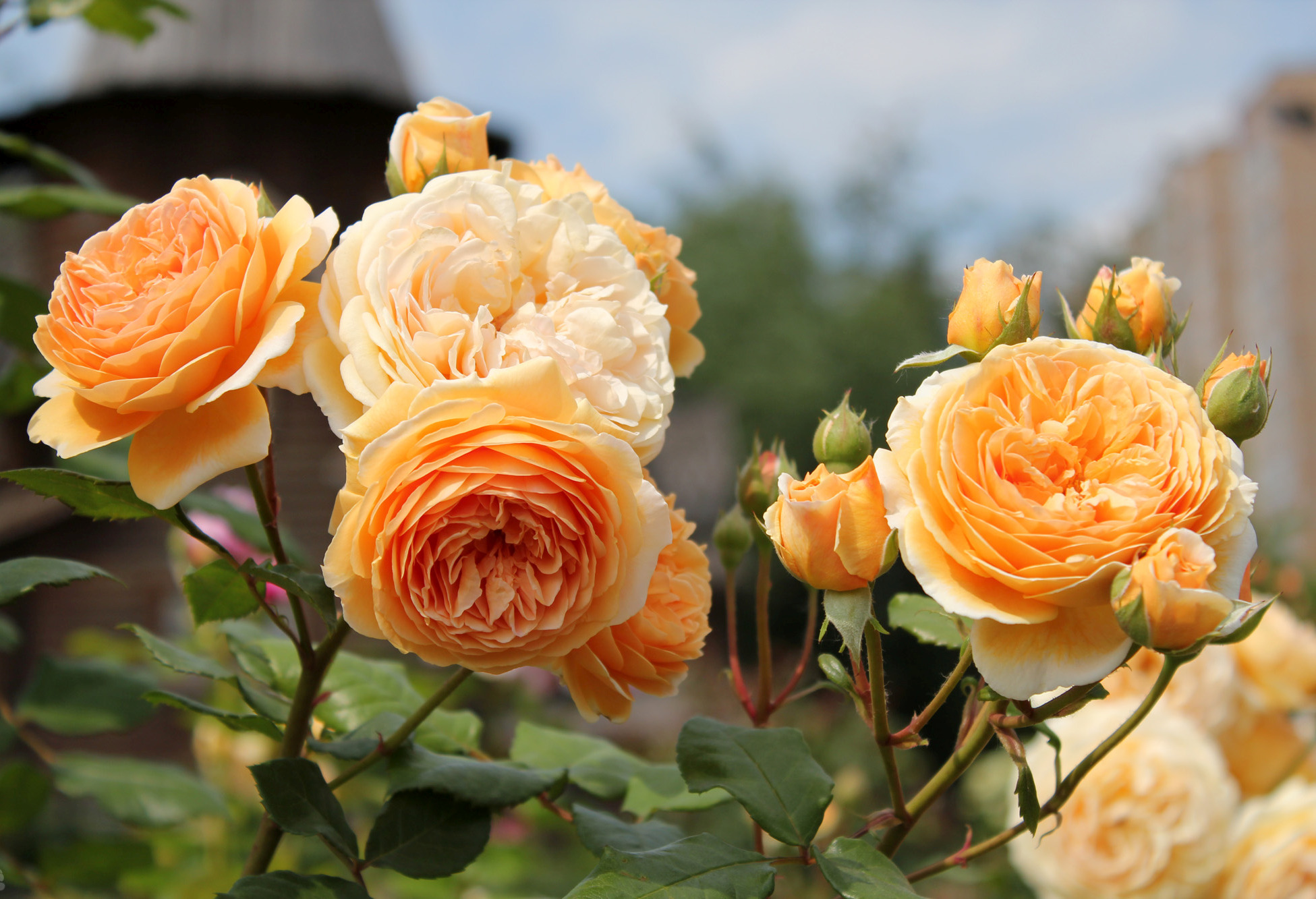In addition to the spring-summer period, rose feeding is also carried out in autumn. Fertilization allows flowers to survive the winter calmly and comfortably. This procedure not only strengthens the roots of the plant, but also improves flowering and growth. A capricious, but very beautiful flower requires regular maintenance and constant care. Only in this case it is possible to achieve a lush and long blooming of roses.
Content
What does feeding roses in autumn give
An ordinary household plot is not always distinguished by fertile and high-quality soil. Although even fatty chernozem tends to deplete over time. During active growth and flowering, roses require a large amount of fertilizer, so in the fall, the supply of fertility in the soil dries up.
The goals of autumn feeding:
- increasing the endurance and resistance of plants to winter frosts;
- saturation of infertile soil with the necessary mineral and organic substances;
- strengthening the roots and stems of the rose;
- recovery after mandatory pre-winter pruning;
- strengthening immunity and increasing resistance to disease.
Fertilizing roses in autumn has its own characteristics that differ from summer and spring dressings. During the autumn period, flowers need 2 dressings at intervals of a month. In order not to harm the plant, it is necessary to correctly select the composition and proportions of the fertilizers applied, to correctly determine the timing of their introduction. It is necessary to feed roses before the onset of frost so that they do not freeze, gain strength for spring growth and subsequent flowering.
What types of fertilizers does a flower need
Specific fertilizers are selected for each rose variety and variety. Not only the choice of mineral components depends on this, but also the methods of fertilization (root and foliar).
Climbing rose
The climbing rose needs to strengthen the root system, which will allow it to painlessly survive the winter. This type of crop is fed in August and September. For the first time, a specially prepared mixture of boric acid, potassium sulfate and superphosphate is used as a fertilizer. The second feeding should include superphosphate and phosphate. Before fertilizing, the soil above the roots must be thoroughly loosened, and after root top dressing, it must be mulched with sawdust. For a climbing rose, proper pruning and cover is very important, when the stems are not cut, but only the growth points are pinched.
Regular
Ready-made granular mixtures of mineral substances, which are poured directly under the stems and poured with water, are suitable for such flowers. In the autumn, roses need magnesium, potassium and phosphorus. The procedure is carried out twice - in late August and mid-September.After the last feeding, the roses are thoroughly pruned.
Sadovaya
Garden roses are also fertilized twice in the fall, using calcium, a little potassium and phosphorus. You can prepare the solution yourself or buy a ready-made liquid in the store. In October, organic matter is introduced into the soil in the form of well-rotted compost or manure. The infusion of onion peels, containing a huge amount of vitamins, has proven itself excellent.
Floribunda
Floribunda roses have their own fertilization characteristics. They are fed only once - in early November, simply by scattering potash and phosphorus fertilizers that do not contain chlorine around the stems. After that, the rose must be carefully covered by pressing the stems to the ground and carefully fastening. The second time you can add manure or compost to the soil.
Park rose
Park rose varieties were bred through complex selection. Such flowers require careful preparation for the winter period. Basically, these activities are reduced to stopping plant growth. For this, it is necessary to change the composition of the applied fertilizers and to do pruning. Park roses are fed two weeks after pruning using phosphorus-potassium fertilizers. After another 4–5 days, it is necessary to pinch the tops of large shoots.
Fertilization time table in different regions
The timing of feeding may differ slightly depending on the climatic conditions of growing.
| Region | First feeding | Second feeding |
| South: Crimea, Krasnodar Territory | September 20-30 | October 1-10 |
| Middle band: Moscow and Moscow region, Leningrad region | August 20-30 | September 10-20 |
| North: Ural, Siberia | 10-20 August | September 1-10 |
These dates are approximate, and the exact time of the autumn feeding is best determined by the current lunar calendar. In areas with a temperate climate, pre-winter watering is carried out in September, at the beginning and end of the month. Foliar top dressing is best done before October, every three weeks, using superphosphate.
Before the very shelter of roses for the winter, at the end of October, it is recommended to add granulated potassium magnesium to the soil. This is an excellent tool for disinfecting and nourishing soil.
Step-by-step feeding instructions
In autumn, roses are fed with both organic and mineral fertilizers. Plants get a lot of nutrients from organic matter, but you should be careful when using manure or bird droppings. These fertilizers contain a large amount of nitrogen, which stimulates active growth of stems and root systems. It is advisable to completely exclude nitrogen fertilizing in the autumn period. The use of such fertilizers is possible only in case of a deficiency of this substance.
Onion husks
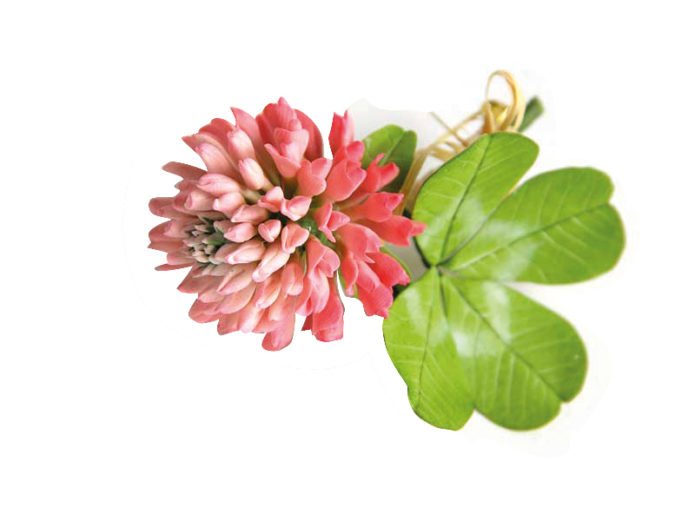
After flowering, any type of greenery is sown in the flowerbed: mustard, vetch-oat mixture, lupine, clover
Onion skins are a great solution. Raw materials are taken at the rate of 2 well-tamped glasses of husk per 10 liters of boiling water and boiled a little. The broth is left for 4-5 hours, filtered and poured under the root of the plant.
To prepare the infusion, you will need 0.5 kg of husk per 2 liters of boiling water. The raw material is poured with water and insisted for a day, placing it in a vessel with a tightly closing lid. After filtering it, another 10 liters of water are diluted and watered with rose bushes. This natural fertilizer is suitable for both root and foliar feeding, carried out before the leaves fall.
Ash
No less popular is ordinary wood ash, which is an invaluable source of potassium. Usually it is simply poured under a bush, on the ground, at the rate of 3 liters per 1 sq. m or diluted in water (100 g / bucket). Good results are obtained by feeding with compost from leaves, tops and manure, and it will need at least 3 kg per 1 sq. m.
Eggshell
Eggshells contain a lot of calcium, which is also used as a fertilizer.You can simply dry it, grind it thoroughly and sprinkle it over the roots (2 tablespoons / sq. M), or pour the shells of 4-5 eggs with a liter of hot water and leave for a week.
Mineral fertilizers
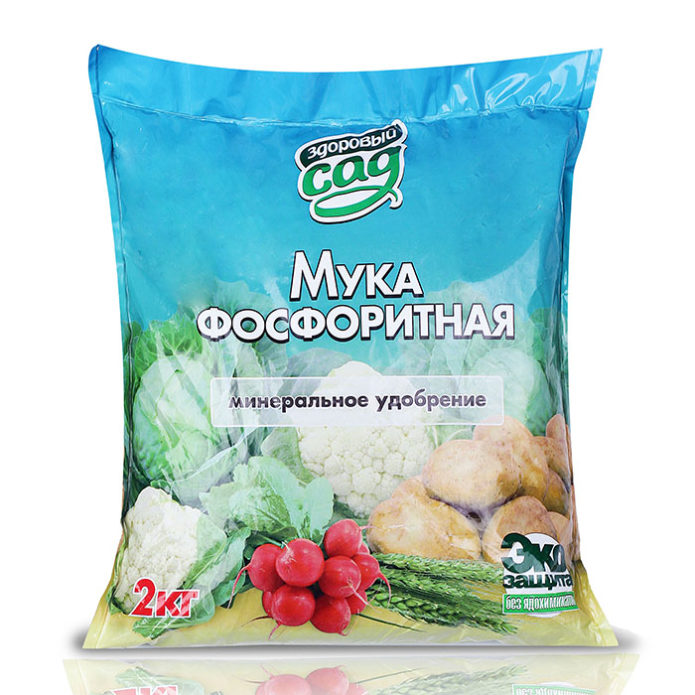
Phosphorite flour is applied once every 3-4 years, since phosphobacteria break down it for a long time and nutrients are available to plants
If possible, it is better to use ready-made mineral mixtures intended for feeding rose bushes. It is also easy to make healthy nutrient solutions yourself. The first time (in late summer - early autumn) roses are fed either with a liquid solution or with granules. For these purposes, potassium monophosphate is suitable, but you can prepare the solution yourself. It is enough to take 1 tbsp. l. potassium, 2 l. phosphate and 0.5 tsp. boric acid.
The plant is also well saved by foliar spraying, which is carried out using 1 tbsp. l. superphosphate, the same amount of potassium monophosphate and 30 liters of water.
The last time before winter, roses are fertilized with potassium (potassium magnesium, potassium sulfate), phosphorus (superphosphates) and calcium (chalk, ash, dolomite). You can take 1 tbsp. l. calcium nitrate in a bucket of water and carefully spill the soil under the bushes. Another way of feeding: add 50 g of superphosphate to a liter of boiling water. Dissolve the resulting concentrate in a bucket of cold water and spray the bush from above.
Specialist's opinion about autumn dressing of roses: video
Autumn fertilization of roses should be treated responsibly, because the overwintering of the plant and its future flowering depend on it. In a rainy autumn, it is better to use a dry type of fertilizer to avoid waterlogging. In case of urgent need, nitrogen fertilization is applied to the soil in early August, but it is advisable not to do this.
